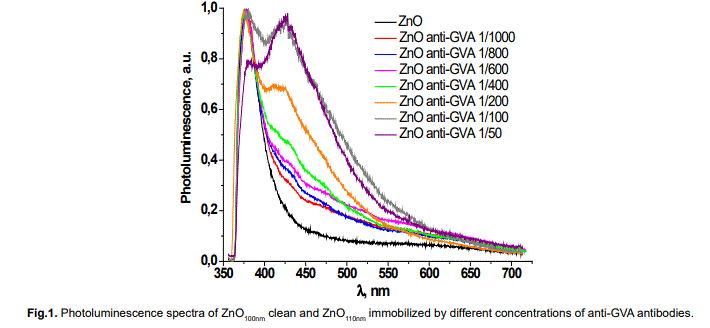International Conference on Immunology and Immunotechnology
November 1-3, 2017 Barcelona, Spain
Optical Immunosensor Based on Photoluminescence of ZnO Thin Films for the Detection of GVA-Antigen Proteins
1Experimental Physics Department, Odessa National I. I. Mechnikov University, Ukraine
2Institut Européen des Membranes IEMM, France
3Department of Microbiology, Virology and Biotechnology, Odessa National I. I. Mechnikov University, Ukraine
4National Scientific Centre “Institute of Viticulture and Wine Making Named After V. Ye. Tairov”, Ukraine
5Department of Physics, Chemistry and Biology, Linköping University, Sweden
6Department of Physical Chemistry, Vilnius University, Sweden
Photoluminescence based immunosensor for the determination of Grapevine virus A-type (GVA) proteins (GVA-antigens) has been developed [1]. The immunosensor was based on thin films of ZnO (100 nm thickness) formed on the Silicon substrates by atomic layer deposition (ALD). The ZnO-based films have demonstrated favorable surface-structural properties for the direct immobilization of antibodies against GVA-antigens in order to form a biosensitive layer sensitive to the GVA antigens. The absorption of anti-GVA antibodies resulted in a new photoluminescence band appearance in the region of 400-550 nm (Fig. 1) that can be caused by the formation of some chemical bounds during the anti-GVA adsorption on ZnO surface. The possibility to detect GVA-antigens without additional labels (e.g enzymes or fluorescent dyes) has been demonstrated. The GVA-antigen detection was performed by the evaluation of changes and behavior of the photoluminescence band, related to protein adsorption. The sensitivity of as-formed label-free biosensor towards the GVA-antigens was determined in the range from 1 pg/ml to 10 ng/ml.

References:
[1] A. Tereshchenko, V. Fedorenko, V. Smyntyna, I. Konup, A. Konup, M. Eriksson, R. Yakimova, A. Ramanavicius, S. Balme, M. Bechelany. ZnO films formed by atomic layer deposition as an optical biosensor platform for the detection of Grapevine virus A-type proteins, Biosensors and Bioelectronics, 2017, 92, 763–769.


